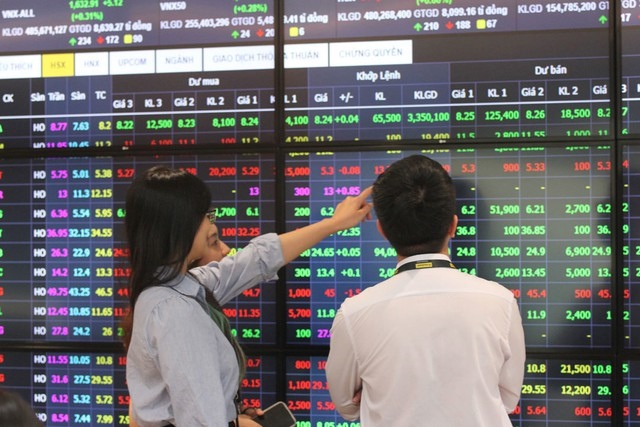Experts look back at a year in the markets
Experts look back at a year in the markets
The stock market in Viet Nam witnessed a strong recovery this year with the benchmark indices, market capitalisation and the involvement of foreign capital soaring over last year, according to the State Securities Commission.Also, the forecasts of economic indicators for next year were also pointing to a continuing recovery of the stock market. In a review of the stock market in 2013, the 10 most significant events were selected out of 15 nominations by the Club of Stock Journalists.

1. Viet Nam stock market strongly recovers
According to statistics of the State Securities Commission, the VN-Index increased by 22 per cent, while the HNX-Index was 13 per cent higher than at the end of 2012, helping Viet Nam to be among those countries recording the fastest pace of recovery.
The market capitalisation reached VND964 trillion (US$45.9 billion), a rise of VND199 trillion ($9.4 billion) over the end of 2012, equivalent to 31 per cent of the country' gross domestic product (GDP).
Also, investors' accounts reached 1.27 million. Individual foreign investors' accounts soared 55 per cent this year, although capital outflow was previously forecast.
2. Landmark merger of two securities firms
On December 12, the State Securities Commission recognised the merger of MB Securities and VIT Securities to form MB Securities.
This was the first-ever merger of securities firms in the Viet Nam stock market – a landmark in the effort of restructuring securities companies.
The restructuring was enhanced during 2013 with a series of securities companies and fund management companies closing their operations, having their licences revoked or being placed under special control.
3. Punishment for slow listing
Decree 108/2013/ND-CP, which came into force on November 15, increased punishments for violations of the law while working in the securities sector.
Notably, the decree regulated that joint stock companies must be listed on stock exchanges within one year after beginning to sell shares to the public.
This regulation aimed to prevent joint stock companies from delaying their being listed.
4. Extension of trading hours on both national stock exchanges
The trading hours on both national stock exchanges were extended by 45 minutes to 3pm. The extension aimed to improve market liquidity, as well as luring investors.
Additionally, many technical market-support solutions were successfully applied in 2013, such as improvements in transaction mechanisms and reductions in stock deposit fees.
5. Sourcing foundation of open-ended funds
The foundation of open-ended funds rapidly boomed in 2013. Many funds were shifted from close-ended to open-ended and many funds were newly founded to specialise in investing in bonds and stocks.
As of the end of 2013, the State Securities Commission granted foundation licences for 10 open-ended funds.
6. Sets of benchmark indices completed
In 2013, sets of benchmark indices, tracking the top 30, 70 and 100 largest shares, were completed, along with indices for specific sectors.
The Ha Noi Stock Exchange officially applied the sectorial benchmark indices in December for financial, construction and industrial sectors.
The sectorial benchmark indices also laid the groundwork for the development of derivatives products.
7. Record growth of the bond market
The bond market in Viet Nam witnessed record growth in 2013, increasing 90 per cent over 2012, with average trading value reaching VND1.257 trillion ($59.85 million) per session.
The bond market set itself an effective capital raising and allocating channel for the economy amid narrow credit growth in the banking system.
8. Record number of stocks delisted
A record 37 stocks were delisted from exchanges this year, compared to 22 delisted stocks in 2012, after merging and restructuring, or reporting losses or violating regulations about publishing information.
Meanwhile, the number of companies which were listed on exchanges in 2013 was only 13, lower than the 25 new listings in 2012.
9. Transparency marked
The Ha Noi Stock Exchange this year began marking the transparency of companies annually, based on criteria consistent with international standards.
The marking was expected to help listed companies improve the quality of their management.
10. Guides on criminally handling of violations raised for the first time
A circular on handling violations in tax, financial, accounting and securities sectors, which came into force on August 15, increased criminal punishments for the first time for three violations in the securities sectors.
Those violations included purposely distorting information in stock operations, using internal information for stock transactions, and manipulating stock prices.
Previously, all violations in the stock sectors were handled by administrative measures. With the circular, the boundary between administrative and criminal punishments became more transparent.
vietnamnews


























